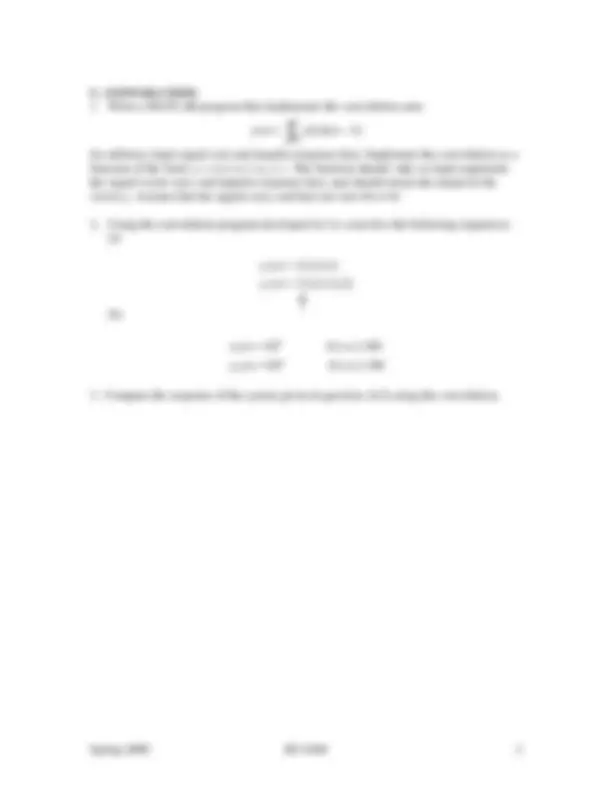



Study with the several resources on Docsity

Earn points by helping other students or get them with a premium plan


Prepare for your exams
Study with the several resources on Docsity

Earn points to download
Earn points by helping other students or get them with a premium plan
Community
Ask the community for help and clear up your study doubts
Discover the best universities in your country according to Docsity users
Free resources
Download our free guides on studying techniques, anxiety management strategies, and thesis advice from Docsity tutors
Write a MATLAB program that implements the above algorithm to compute the square root of: 16, 4, 5 and 3. How many iterations does it take to converge to ...
Typology: Study notes
1 / 2

This page cannot be seen from the preview
Don't miss anything!


Spring 2000 EE 6360 1
Due: March 9, 2000
A. RESPONSE OF DISCRETE-TIME SYSTEMS
where a=0.5, and the input signal x(n) is the sinewave, x n ( ) = 3 sin( 2 π 0 2. n ). Assume
zero initial conditions, y(-1)=0. Plot y(n), for n=1, 2, …, 200.
where the input signal x(n) is the sinewave, x n ( ) = 3 sin( 2 π 0 2. n ).
y n y n
x n y n
If we use as the input x(n) to this system (algorithm) a step function of amplitude A, then y(n) will converge after several iterations to the square root of A.
Write a MATLAB program that implements the above algorithm to compute the square root of: 16, 4, 5 and 3. How many iterations does it take to converge to the true value assuming y(-1)=0.5? Is the algorithm sensitive to the initial conditions y(-1)?
B. IMPULSE RESPONSE
(b) y n ( ) = x n ( ) + 0 5. y n ( − 1 ) − 0 5. y n ( − 4 ) + x n ( − 3 ) (c ) y n ( ) = 4 5. x n ( ) + 2 3. x n ( − 2 ) + 4 x n ( − 4 ) Plot the impulse response h(n), for n=0,1,…,100.
Spring 2000 EE 6360 2
y n x k h n k k
=−∞
∞
for arbitrary input signal x(n) and impulse response h(n). Implement the convolution as a function of the form: y=convol(x,h). The function should take as input arguments the signal vector x(n), and impulse response h(n), and should return the output in the vector y. Assume that the signals x(n), and h(n) are zero for n<0.
x n x n
1 2
(b)
x n x n
n n
1 2
0 n 100 0 n 100